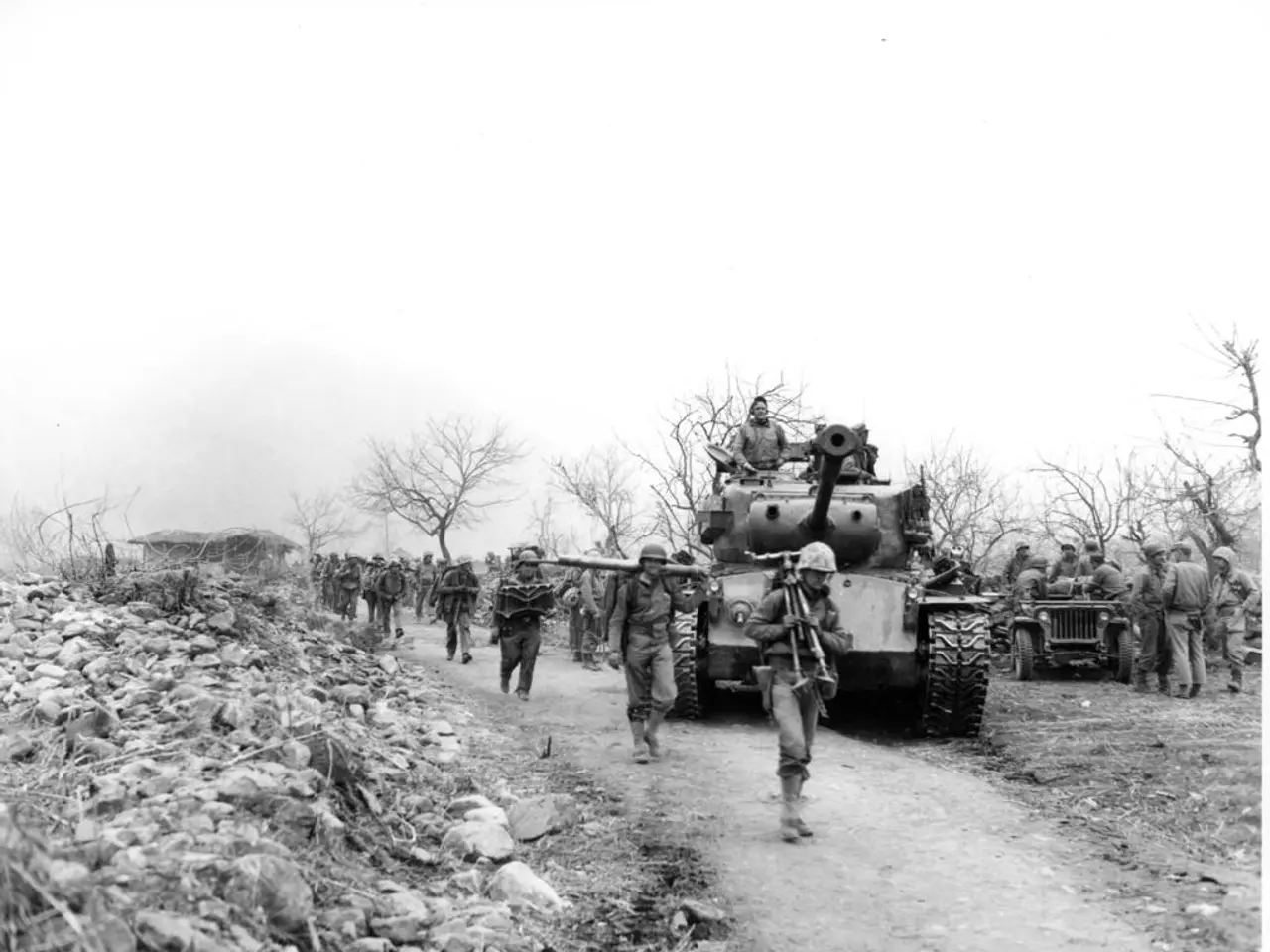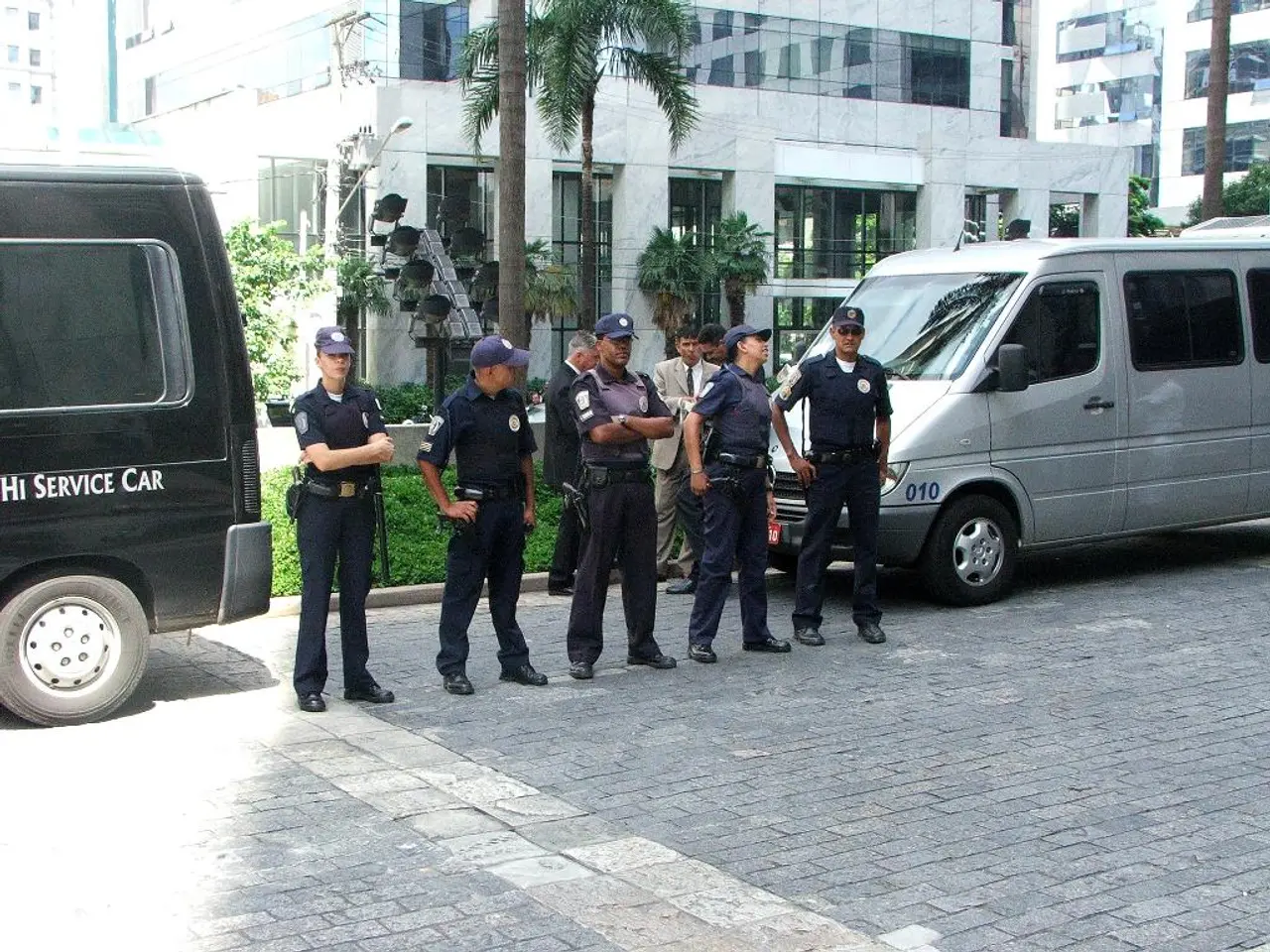Civilian Collaboration in Bundeswehr's Emergency Response and Wound Treatment Operations
In a groundbreaking exercise, the German Armed Forces are showcasing the importance of civil-military cooperation in healthcare during war scenarios. The Integrated Logistics and Medical (ILU San) exercise, coordinated by the Support Command of the Bundeswehr, is designed to simulate wartime medical operations that require efficient collaboration for patient care, medical evacuation, and support logistics.
The scenario for the ILU San exercise is based on a lesson learned from the Russian invasion of Ukraine, where pioneer forces laying a minefield were targeted by a drone. This exercise marks the first time that cooperation with civilian partners in a war scenario is being shown and practiced.
During the exercise, German Armed Forces and their civilian partners, such as the German Red Cross, Johanniter, and Malteser, work together to provide comprehensive medical support. The first aider Bravo takes over the treatment of the wounded at the impact site, while patients are picked up by medical personnel who operate treatment level 1, a rescue station, at the casualty collection point.
At treatment level 2, a rescue center, surgical interventions can be performed to further stabilize the patient. The distribution of wounded to civilian clinics works well in the exercise scenario, demonstrating the feasibility of integrating the civilian side into Bundeswehr exercises.
The Federal Office for Civil Protection and Disaster Assistance (BBK) takes on a coordinating role for the incoming strategic wounded transport by rail during the ILU San exercise. The BBK president, Ralph Tieser, stresses the need for close coordination between civilian and military sides for the care and transport of a large number of injured people.
Generaloberstabsarzt Hoffmann in Feldkirchen concludes that they will continue to integrate the civilian side into their exercises, while Generalstabsarzt Backus emphasizes the importance of civil-military cooperation in healthcare for successful overall planning of Operation Plan Germany. The medical service of the German Armed Forces demonstrates its capabilities in treating wounded personnel during the information and training exercise of the Bundeswehr 2025.
The ILU San exercise highlights the importance of establishing structured communication channels, joint planning, and role delineation between military medical units, civilian hospitals, and public health authorities. This approach enhances preparedness, resilience, and the ability to maintain health services continuity during complex emergencies.
For further information about the ILU San exercise, please contact the Press and Information Centre of the Support Command of the Bundeswehr. The exercise underscores the German Armed Forces' commitment to ensuring that both military personnel and civilian populations receive effective medical care during war scenarios.
The ILU San exercise, inspired by the Russian invasion of Ukraine, is the first to demonstrate cooperation with civilian partners in a war scenario, with entities such as the German Red Cross, Johanniter, and Malteser collaborating with the German Armed Forces. The Federal Office for Civil Protection and Disaster Assistance (BBK) plays a crucial role in coordinating the strategic transport of wounded by rail during this exercise. The focus on civil-military cooperation in healthcare ensures the provision of effective medical care to both military personnel and civilian populations during war scenarios, while also emphasizing the importance of structured communication, joint planning, and role delineation between military medical units, civilian hospitals, and public health authorities.








